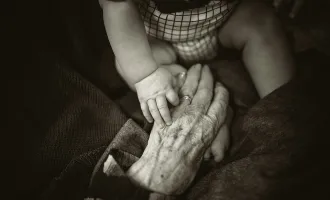Do PTs Do Massage?
Yes. But they can be painful, and getting a “massage” from a physical therapist (PT) is not the calming experience with music and aromatic lotion you may be hoping for.
In PT lingo, a massage is termed “soft-tissue mobilization” (STM) and is applied to a select region of the body, and only when indicated for treatment. In other words, not every knee or hip that walks in the door gets its surrounding tissues mobilized.
Furthermore, soft-tissue mobilization is almost never the sole treatment. It is applied in tandem with therapeutic exercise (warning—sweating may occur), patient education (doh!—there’s learning involved!) and a home exercise program (a.k.a. homework).
So when is STM indicated? Common conditions include: scar tissue adhesions, facial restrictions, muscle hypertonus, muscle strains, tendinopathies and ligamentous sprains.
STM is theorized to decrease tissue adhesion, muscle tension and neuromuscular excitability, while increasing muscle compliance, range of motion, muscle and skin blood flow, and relaxation hormones (perhaps patients’ favorite benefit of the treatment).
STM is also thought to promote redistribution of lymphatic flow and interstitial fluids, and realignment of collagen fibers.
Physical therapists have a variety of STM techniques in their toolboxes, and techniques may vary from one practitioner to another. Treatment with STM generally begins with observation of the affected area and palpation for temperature, tenderness and contour.
Generally, PTs will then move on to superficial techniques, including skin gliding, superficial effleurage and skin rolling. These are very light hand motions that further assess the tension of the area, and introduce the patient to the therapist’s hands.
Depending on the level of pain and stage of healing, PTs may then use deeper, myofascial STM. Typically, a PT will apply one or more of the following: parallel mobilization (planing the tissue with the heel of the hand, thumbs or forearm), perpendicular mobilization (strumming or bending with a sustained hold), petrissage (kneading and squeezing, usually for muscles) or myofascial release (holding the tissue for 90 seconds and then releasing).
Specialized techniques include friction massage, which is used more commonly for tendinopathies, and instrument-assisted mobilization, such as the Graston technique, used for connective tissue adhesions.
Additionally, the Barrier-Release phenomenon continues to amaze patients—whereby holding a tissue in sustained pressure causes it to suddenly “release.”
STM sounds beneficial; however, the stage of tissue healing must be taken into account. Acute injuries or inflammation should not receive STM, as well as several other conditions, such as cancer, advanced diabetes, osteoporosis and unhealed fractures.
If you have any questions about muscles and bones, musculoskeletal issues you’ve had or would like to know more about, or anything under the sun related to physical therapy, send them her way, to Ilka.Felsen@ucsf.edu.


